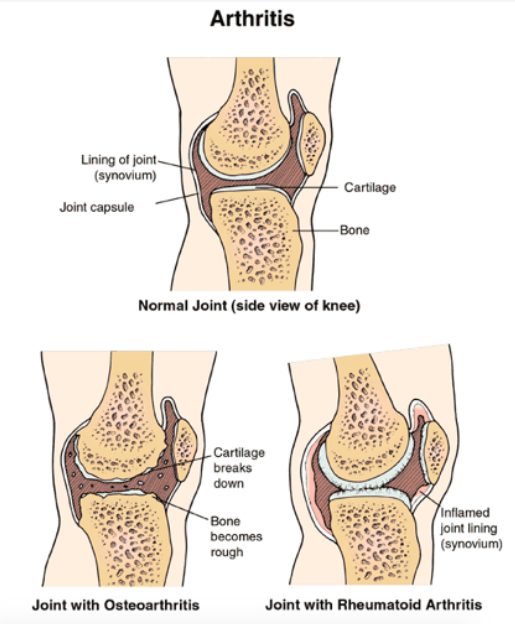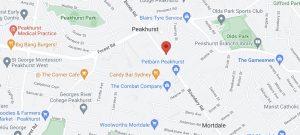Osteoarthritis is a disease that causes the breakdown of the cartilage in joints. Commonly referred to as Arthritis. Cartilage is the joint’s cushion. It covers the ends of bones and allows free movement. If it becomes rough, frays, or wears away, it causes bones to grind against each other. As a result, the joint becomes irritated and inflamed. Sometimes the irritation causes abnormal bone growths, called spurs, which increases swelling. The disease normally affects the feet, knees, lower back, hips, and fingers. Usually, only one or maybe a few joints are affected at one time.
Osteoarthritis is 3 times more common in women than in men. It is usually more bothersome after the age of 60. By age 60, most people have some osteoarthritis, although it may be too mild to cause symptoms.
How does it occur?
Osteoarthritis is caused by excessive wear on joints and possibly by inflammation within cartilage. Obesity, bad posture, old injuries, and overuse can all cause extra wear on joints. Heredity also appears to play a role.
What are osteoarthritis symptoms?
The symptoms of osteoarthritis include:
- mild to severe pain in a joint, especially after overuse or long periods of inactivity, such as sitting for a long time
- creaking or grating sound in the joint
- swelling, stiffness, limited movement of the joint
- weakness in muscles around the sore joint from lack of use
- deformity of the joint
How is it diagnosed?
Our practitioners will review your medical history and examine you. X-rays may be used in the diagnosis but are not always necessary. Understanding your lifestyle will be key in determining how much wear and tear you are placing on your joints.
How is osteoarthritis treated?
The aim of treatment is to keep the joint working by reducing strain on the joint and by relieving pain, stiffness, and swelling.
Arthritis is the body’s attempt at immobilising an injured area. So we place emphasis on first making sure the other joints involved in a painful movement are working really well.
We always look at the areas above and below the painful segment and then we focus on the whole system regaining movement.
Manual therapy provides relief from pain and muscle spasms and maintains joint range of motion. Regular gentle exercise is very important for controlling osteoarthritis.
Exercise and movements should then emphasise strength as their main outcome as strength is what will really protect the affected joint from abnormal loading.
Sometimes severely damaged hips and knees may be surgically replaced.
How long will the effects of osteoarthritis last?
Unfortunately, osteoarthritis is a lifetime disease that can worsen over time. Avoiding repeated injury to your joints can help, but damaged cartilage cannot repair itself. We cannot reverse this process, but we have a great track record of managing it really well.
How can I take care of myself?
Although no one yet knows how to prevent osteoarthritis, you can help prevent symptoms by following these guidelines:
- Keep your joints in good working order. Stay fit. Exercise and move to get strong
- Daily moderate exercise is much better for your joints than occasional strenuous exercise. Walk a little each day to a level you can tolerate that does not produce pain
- Be sure to wear comfortable, well-cushioned walking shoes. Otherwise, you can exercise while sitting down or go swimming
- The water in heated swimming pools can help support your weight while you exercise, and the warmth helps improve joint movement
- Protect your joints by doing warm-up exercises before strenuous activity
- Keep your body healthy by eating a healthy diet low in inflammatory foods.
- Maintain a healthy weight range



